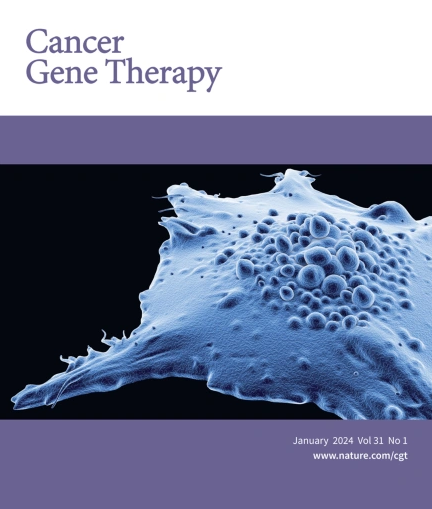PANoptosis:在癌症进展和治疗中连接凋亡、热凋亡和坏死。
IF 4.8
3区 医学
Q1 BIOTECHNOLOGY & APPLIED MICROBIOLOGY
引用次数: 0
摘要
这篇综合性综述探讨了泛凋亡的复杂机制及其对癌症的影响。泛凋亡是细胞凋亡、热凋亡和坏死的融合,在细胞死亡和免疫反应调节中发挥着至关重要的作用。该研究深入探讨了每种细胞死亡机制的分子途径及其在 PANoptosis 中的相互影响,强调了 Caspases 和 PANoptosome 复合物等共享成分。研究强调了 PANoptosis 在各种癌症(包括呼吸系统癌症、消化系统癌症、泌尿生殖系统癌症、胶质瘤和乳腺癌)中的重要作用,显示了它对肿瘤发生和患者生存率的影响。我们进一步讨论了 PANoptosis 与肿瘤微环境(TME)之间的交织关系,说明了 PANoptosis 如何影响免疫细胞行为和肿瘤进展。综述强调了肿瘤及其微环境之间的动态相互作用,重点介绍了不同免疫细胞的作用及其与癌细胞的相互作用。此外,综述还介绍了癌症治疗的新突破,强调了靶向 PANoptosis 增强抗肿瘤免疫力的潜力。综述概述了以治疗为目的操纵泛凋亡通路的各种策略,如靶向caspases、NLRP3、RIPK1和RIPK3等关键信号分子。此外,还探讨了免疫原性 PANoptosis 启动疗法和基于纳米粒子的策略等新型疗法的潜力。本文章由计算机程序翻译,如有差异,请以英文原文为准。

PANoptosis: bridging apoptosis, pyroptosis, and necroptosis in cancer progression and treatment
This comprehensive review explores the intricate mechanisms of PANoptosis and its implications in cancer. PANoptosis, a convergence of apoptosis, pyroptosis, and necroptosis, plays a crucial role in cell death and immune response regulation. The study delves into the molecular pathways of each cell death mechanism and their crosstalk within PANoptosis, emphasizing the shared components like caspases and the PANoptosome complex. It highlights the significant role of PANoptosis in various cancers, including respiratory, digestive, genitourinary, gliomas, and breast cancers, showing its impact on tumorigenesis and patient survival rates. We further discuss the interwoven relationship between PANoptosis and the tumor microenvironment (TME), illustrating how PANoptosis influences immune cell behavior and tumor progression. It underscores the dynamic interplay between tumors and their microenvironments, focusing on the roles of different immune cells and their interactions with cancer cells. Moreover, the review presents new breakthroughs in cancer therapy, emphasizing the potential of targeting PANoptosis to enhance anti-tumor immunity. It outlines various strategies to manipulate PANoptosis pathways for therapeutic purposes, such as targeting key signaling molecules like caspases, NLRP3, RIPK1, and RIPK3. The potential of novel treatments like immunogenic PANoptosis-initiated therapies and nanoparticle-based strategies is also explored.
求助全文
通过发布文献求助,成功后即可免费获取论文全文。
去求助
来源期刊

Cancer gene therapy
医学-生物工程与应用微生物
CiteScore
10.20
自引率
0.00%
发文量
150
审稿时长
4-8 weeks
期刊介绍:
Cancer Gene Therapy is the essential gene and cellular therapy resource for cancer researchers and clinicians, keeping readers up to date with the latest developments in gene and cellular therapies for cancer. The journal publishes original laboratory and clinical research papers, case reports and review articles. Publication topics include RNAi approaches, drug resistance, hematopoietic progenitor cell gene transfer, cancer stem cells, cellular therapies, homologous recombination, ribozyme technology, antisense technology, tumor immunotherapy and tumor suppressors, translational research, cancer therapy, gene delivery systems (viral and non-viral), anti-gene therapy (antisense, siRNA & ribozymes), apoptosis; mechanisms and therapies, vaccine development, immunology and immunotherapy, DNA synthesis and repair.
Cancer Gene Therapy publishes the results of laboratory investigations, preclinical studies, and clinical trials in the field of gene transfer/gene therapy and cellular therapies as applied to cancer research. Types of articles published include original research articles; case reports; brief communications; review articles in the main fields of drug resistance/sensitivity, gene therapy, cellular therapy, tumor suppressor and anti-oncogene therapy, cytokine/tumor immunotherapy, etc.; industry perspectives; and letters to the editor.
 求助内容:
求助内容: 应助结果提醒方式:
应助结果提醒方式:


